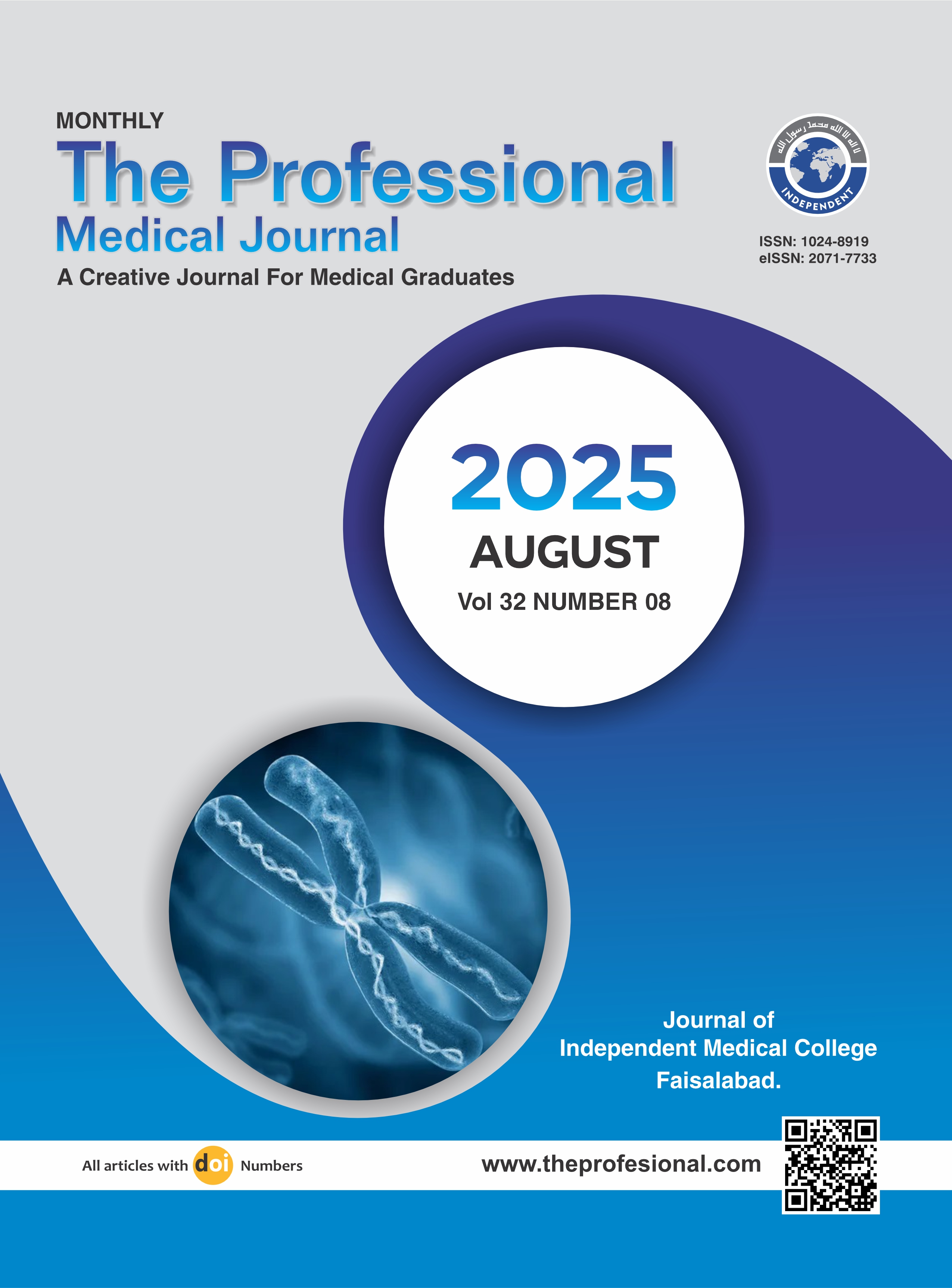Frequency of cardiac dysfunction in severely malnourished children.
DOI:
https://doi.org/10.29309/TPMJ/2025.32.08.9335Keywords:
Bilateral Pedal Edema, Cardiac Dysfunction, Ejection Fraction, Left Ventricular, MalnutritionAbstract
Objective: To determine the frequency of cardiac dysfunction in children having severe acute malnutrition (SAM). Study Design: Cross-sectional study. Setting: In-patient Department of Pediatric Medicine, National Institute of Child Health (NICH), Karachi, Pakistan. Period: May 2024 to October 2024. Methods: A total of 188 children aged 6-59 months with severe acute malnutrition (SAM) were analyzed. Demographics, anthropometric data, and vital signs were documented. Echocardiography assessed ejection fraction (EF), right ventricular mass (RVM), and left ventricular mass (LVM). Data were analyzed using IBM-SPSS Statistics, version 26.0. Results: In a total of 188 children, 101 (53.7%) were female. Cardiac dysfunction was noted among 45 (23.9%) children. The most common cardiac dysfunction findings were diastolic dysfunction, and left ventricular hypertrophy, identified in 24 (53.3%), and 13 (28.9%) children, respectively. The mean WHZ-score was significantly lower in children with cardiac dysfunction (-3.38±0.52 vs. 3.09±0.30, p<0.001). Bilateral pedal edema (53.3% vs. 17.5%, p<0.001), dyspnea (57.8% vs. 40.6%, p=0.043), abnormal fast breathing (40.0% vs. 20.3%, p=0.008), difficulty in breathing (66.7% vs. 44.8%, p=0.010), weight loss (40.0% vs. 20.3%, p=0.008), and hepatomegaly (40.0% vs. 20.3%, p=0.008) were significantly associated with cardiac dysfunction. Echocardiographic findings showed that children with cardiac dysfunction had a significantly lower mean ejection fraction (58.67±4.82 vs. 62.80 ± 3.87%, p<0.001), higher right ventricular mass (18.27±4.34 vs. 17.10±3.03 g, p=0.045), and lower left ventricular mass (21.09±11.30 vs. 27.45±8.30 g, p<0.001). Conclusion: This study highlights the significant burden of cardiac dysfunction in children with SAM.
Downloads
Published
Issue
Section
License
Copyright (c) 2025 The Professional Medical Journal

This work is licensed under a Creative Commons Attribution-NonCommercial 4.0 International License.


